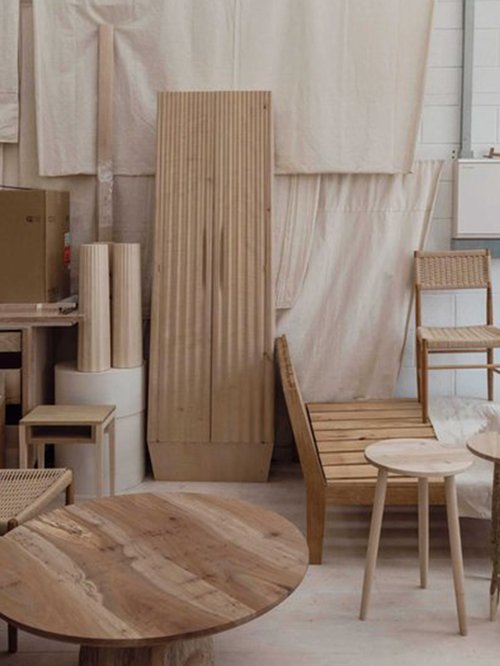
5 min read
Inside the Workshop: Sebastian Cox
On a recent trip to the UK, we had the chance to meet designer, craftsman and environmentalist Sebastian Cox, to learn more about his studio and have a tour of his workshop.
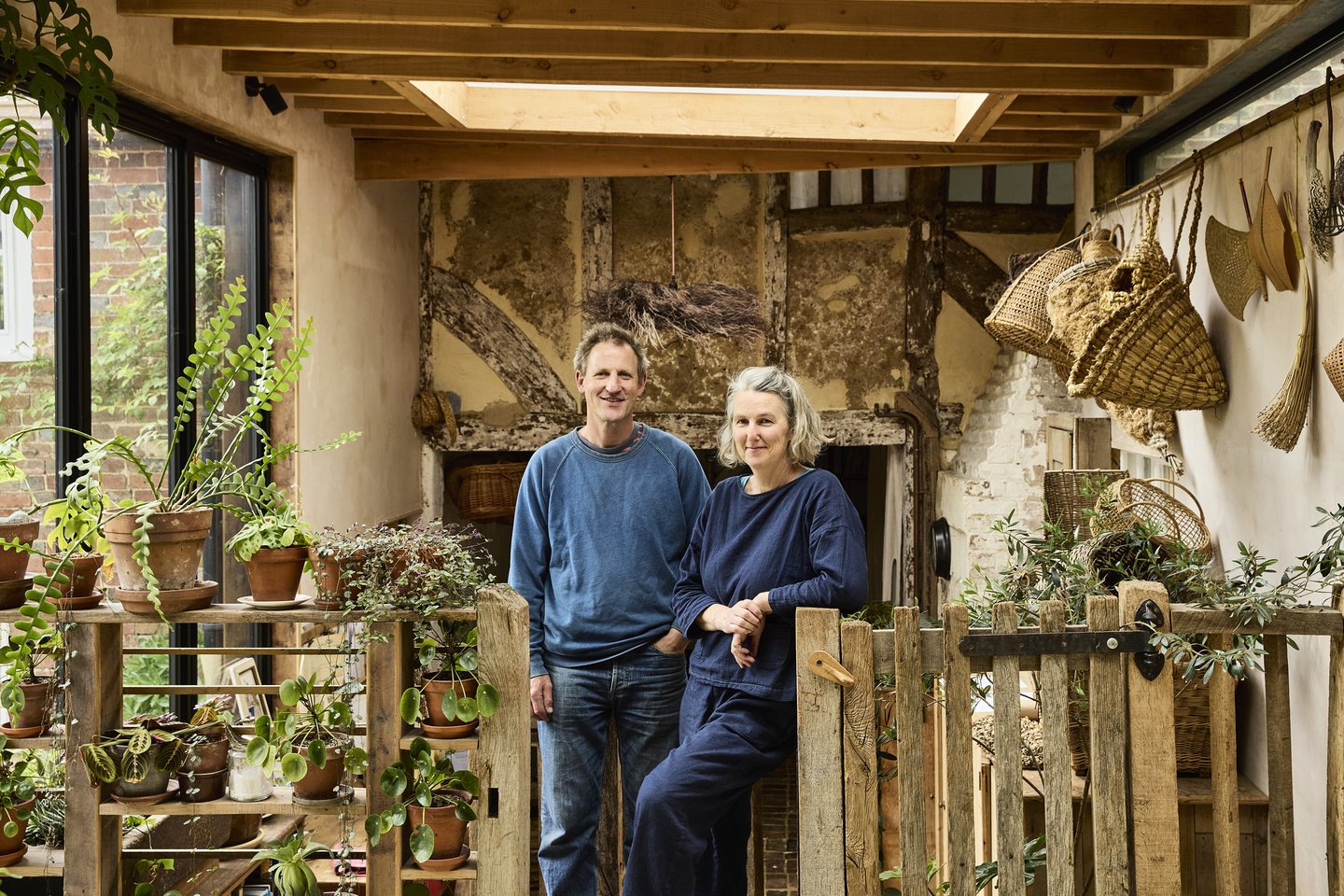
4 min read
Studio AMOS is a British craft studio led by Annemarie O'Sullivan and Tom McWalter. Their work is rooted in the ancient craft of basket making, and they grow and harvest local materials to make functional objects, furniture and lighting. Earlier in the summer, we paid them a visit.
It’s a sunny morning in East Sussex when we arrive at the home and workshops of Annemarie O’Sullivan, the celebrated British basket weaver. The last of the bluebells are on show and a chorus of birdsong emanates from the hedgerows surrounding the property.
With a practice grounded in a deep connection to nature, Annemarie uses weaving and binding techniques which have been employed for hundreds of years. Together with her husband, Tom McWalter, the duo run Studio AMOS, creating functional domestic objects, lighting and furniture, alongside site-specific installations for galleries and private clients at home and overseas.
Bundles of harvested willow rods, sorted by height, type and then labeled, are propped up against the timber-clad and light-filled studio. A few steps away, the couple’s Tudor cottage and converted outbuildings, beautifully decorated with furniture and handcrafted objects collected over the years, feels like a haven of tranquility.
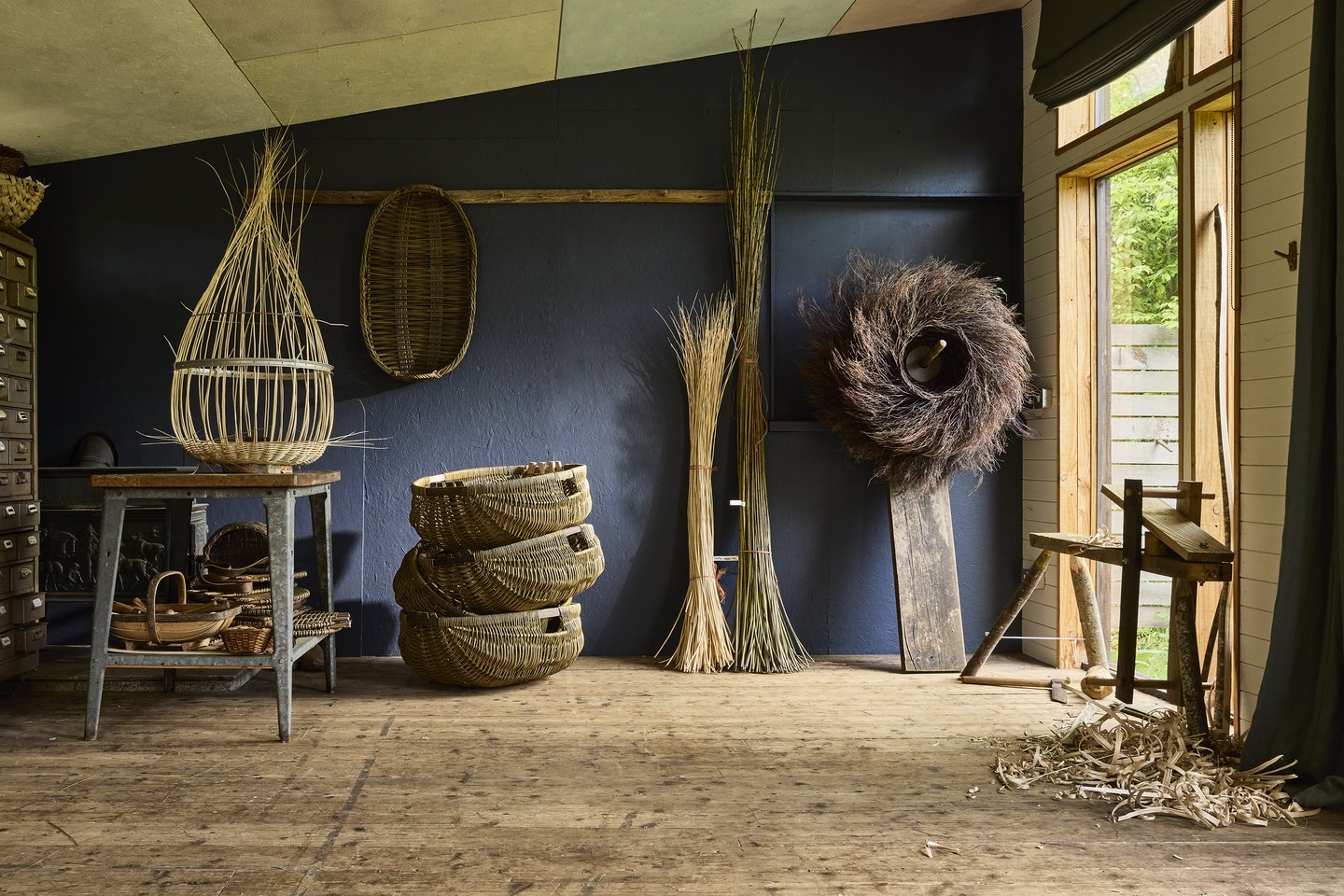
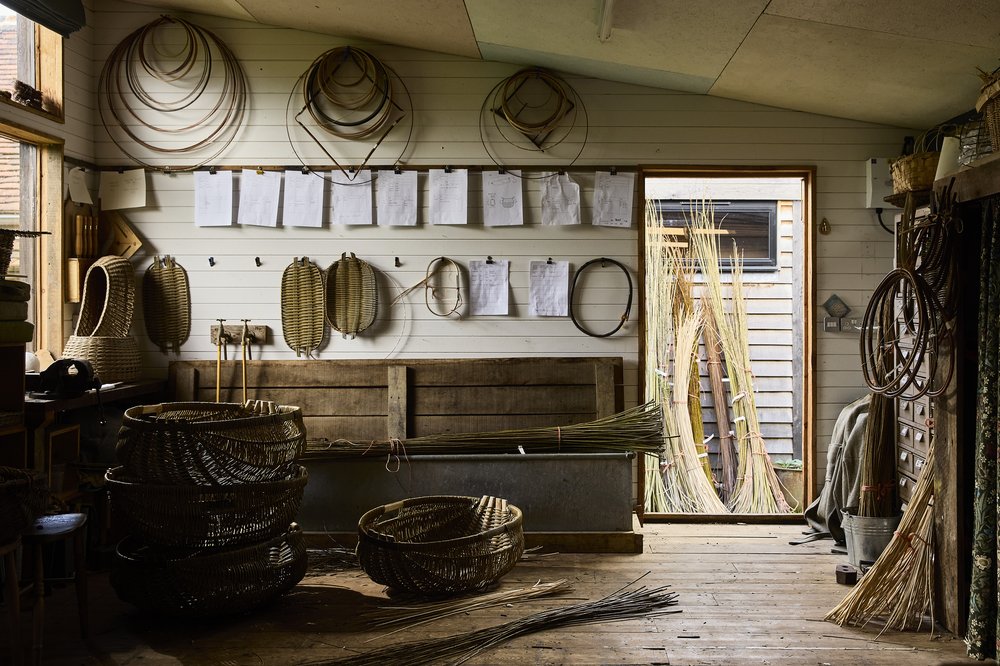

Annemarie is softly spoken, with a dry sense of humor. Over a cup of tea, she explains that having grown up in Ireland, she moved to the UK aged 17, eventually becoming a primary school teacher. At 30, she was married with two young sons, and feeling a pull to learn a craft and do something with her hands, she took a one-day basket-making workshop.
This set her on a new path and a five-year basketry training course followed, where she learned a broad range of skills, using a variety of materials. Realizing she was drawn to the liveliness of English willow, this is the material she now works with the most, together with coppiced timber, straw, heather and hay.
“I love the slowness and the cyclical rhythm of the process. We grow most of the materials, so there’s also a strong connection with the land and the movement of the seasons”
Annemarie O’Sullivan
“Basketry is thought to be the oldest craft in the world, 10-12,000 years old, and found in almost every country,” she explains. “It feels a great privilege to be involved with a craft that has been practiced by humans for thousands of years – working with your hands connects you to all the basket makers who have come before.”


“I love the slowness and the cyclical rhythm of the process. We grow most of the materials, so there’s also a strong connection with the land and the movement of the seasons,” she continues.
Tom and Annemarie cultivate 20 varieties of willow on a nearby half-acre plot of land owned by the Biodynamic Land Trust, a regenerative agricultural charity. These are planted as short cuttings in close rows at the beginning of the year and are harvested by hand the following January. Once harvested the bundles are sorted and stand to dry for several months. By springtime, the plot is full of life again as new buds bulge up through the winter stubble.
Once bundles are fully dry and the material is ready to be used, the willow rods are soaked in a trough in the studio to make them malleable enough to work.
The act of weaving is very physical. “I use my whole body, and it’s particularly tough on the back and wrists, so every morning, the yoga mat is rolled out, and that has become an important part of the process” she says.



Annemarie demonstrates some of her techniques. Most of her baskets begin with a steam-bent hoop. She weaves the base and then attaches stakes, which look like skinny spokes rising upwards. Willow rods are attached and woven or bound meticulously, drawing on a wide variety of potential patterns or techniques. The tools involved are simple: a bodkin to create space between the weave; a cow horn, in which the bodkin is stored, which contains tallow to lubricate; a few short-bladed knives and a pair of cutters to trim messy ends.
Studio AMOS’ designs are inspired by the vernacular baskets of Britain, Ireland and Europe, and the history and legacy of the craft. Deep research is important, with the couple collecting visual information from archives, museums and books. Annemarie and Tom also travel to train or mentor with their contemporaries internationally, learning age-old skills and traditions and refining their own methods or approaches.



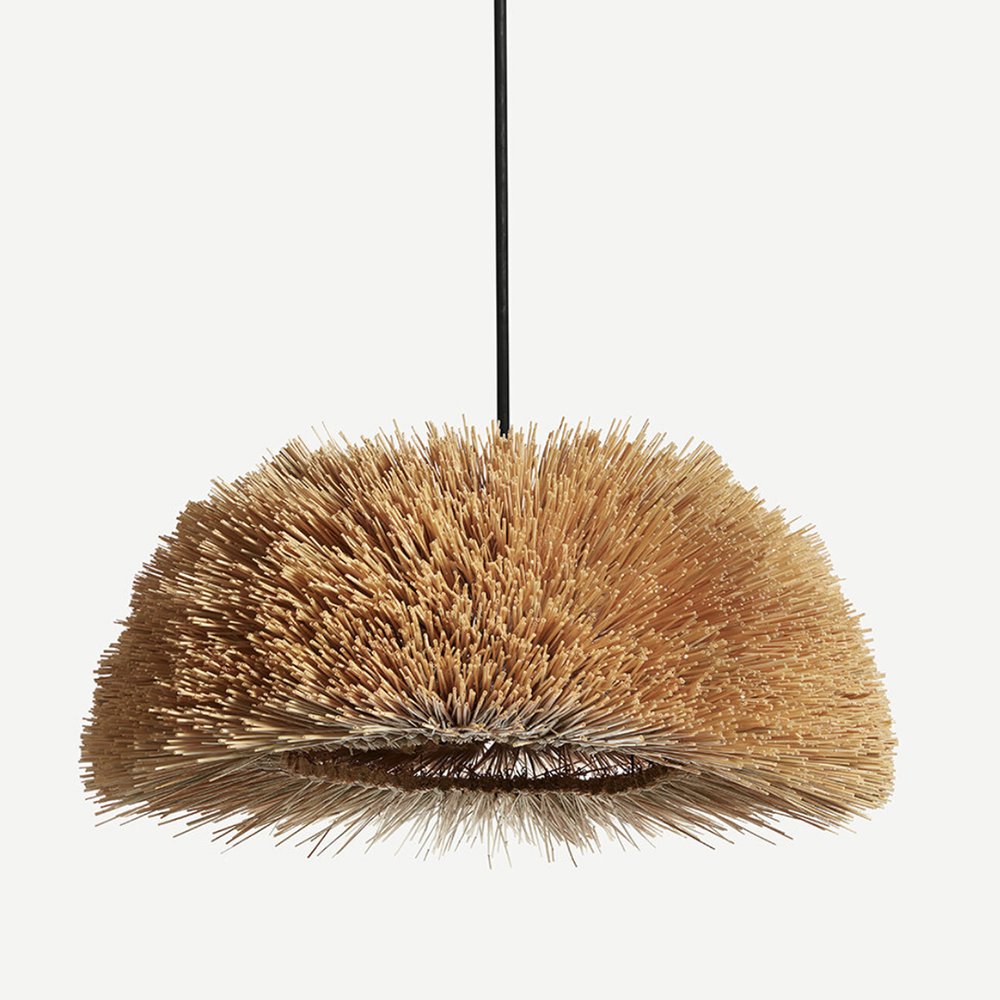
“From a technical perspective, nothing is new. It’s all ingredients which are borrowed and maybe just reworked,” she explains. It is in the application of ideas where new possibilities lie, and the studio enjoys collaborations with designers and makers from other disciplines, which Tom says afford the opportunity to keep their work moving in fresh and unexpected directions.
By engaging with and appreciating every step, from growing and harvesting of sustainable local materials, through to design and production of useful and functional objects that will last a lifetime, Studio AMOS draw on the curves and liveliness of the landscape in which they inhabit. This quiet reverence for their craft and this connection with nature imparts a unique spirit – one which is present in each piece that passes through their hands.






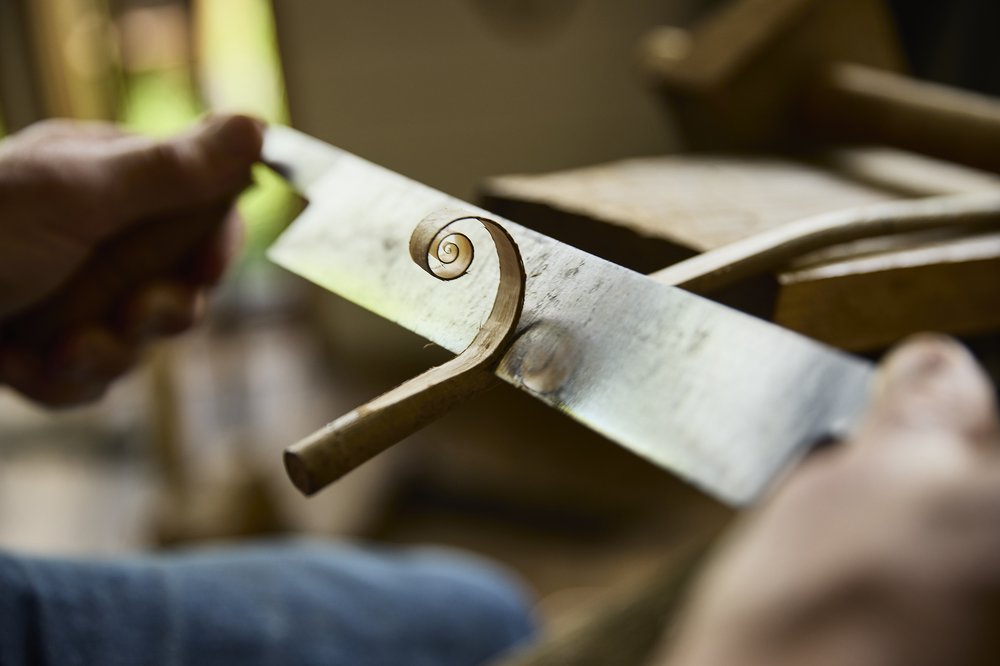
Photography: Petr Krejci


5 min read
On a recent trip to the UK, we had the chance to meet designer, craftsman and environmentalist Sebastian Cox, to learn more about his studio and have a tour of his workshop.

4 min read
The book ‘Material Health: Design Frontiers’ from Parsons Healthy Materials Lab explores the critical topics of material health in the era of climate crisis.